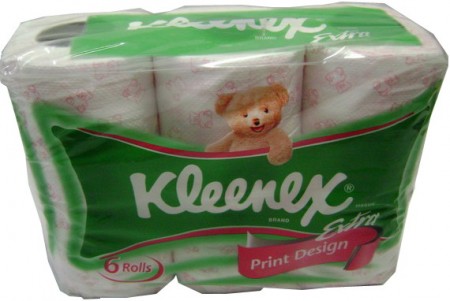57 Meditations on Kicking @$$ in Business and Life"4.8/5 stars" on Amazon
5 Tips On How To Name Your Brand To Be As Dominant As Kleenex
How do you create a “Kleenex”-like brand that is synonymous with its product category?
After I crafted The Top 100 Colloquial Brands, I came up with some observations about these brands that might be good tips for you to use to name your brands.
Enjoy!

5 Tips On How To Create A Colloquial/Genericized Brand
1) Use Alliteration
Top brands use alliteration, which is typically defined as using the same sounding first syllable sequentially. Examples of alliteration in the Top 100 Colloquial Brand list I did include:
- Yo-Yo
- Ping Pong
- Powerpoint
- Roto Rooter
- Armor All
Alliteration is sometimes more broadly defined as using the same sound of any syllable when said in sequence,; using that definition, you would also add these Top 100 Brands as examples of alliteration:
- Zipper
- Swiffer
- Dramamine
- Kleenex (since most people pronounce it “Kleen–nex”)
An even broader interpretation of alliteration in which the last syllable has the same sound would allow us to include Mack Truck to the list.
Check out The Best Examples of Alliteration in Business & Brands piece I did for even more on the subject.
2) Use Descriptive Words In Your Brand
Many top genericized brands include a word that describes the purpose of the product. Examples include:
- Scotch Tape
- Astro Turf
- Saran Wrap
- Ace Bandage
- Plexiglas
- Kool-Aid
- Krazy Glue
Note: You’ll note that some of the descriptive words are spelled differently (such as “Glas” or “Kool”)
And you can of course use two or more descriptive words in a row like:
- Roller-Blade
- Chap-stick
- Super Heroes
- Wite-Out
- Photo-shop
- Zip-loc
- Zip-Car
- Shredded Wheat
3) Keep Your Brand Name Short (2 To 3 Syllables Is Ideal)
Amazingly, 86% of the top 100 Colloquial Brands are two or three syllables long.
Ten percent of the Top 100 are four syllables long and 4% are one syllable long.
You’ll note that NONE of the Top 100 contain more than four syllables…interesting!
4) Use Words That Can Act As Nouns AND Verbs
- Video Tape
- Scotch Tape
- Bubble Wrap
- Astro-Turf
- Rollerblade
- Hacky Sack
- Wite-Out
- PowerPoint
- Skype
- Jet Ski
- FedEx
- Swiffer
- Xerox
- Krazy Glue
- Zamboni
5) Use Your Family Name As Inspiration
Don’t be afraid to use your family name. Examples of family-inspired names include:
- Jacuzzi — Seven Italian brothers in the Jacuzzi family immigrated to the U.S. and created an aircraft propeller company that turned into the hot tub giant.
- Murphy Bed — William Lawrence Murphy started this pull-down bed company.
- Zamboni — Frank Zamboni used his name as the company name and that stuck for the term most people use for an ice resurfacing machine.
- Dumpster — Built by the Dempster Brothers, Inc. of Knoxville, they named their product the Dempster Dumpster and “Dumpster” stuck.
- Stetson — This hat was named after John B. Stetson who created a rugged hat for himself .
I haven’t had time to check into how important first-mover advantage is to building a colloquial/genericized brand. Perhaps you want to take a crack at that!
Tweet Comment